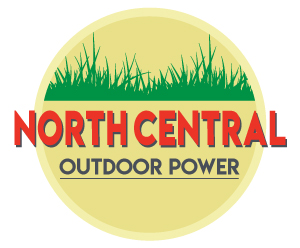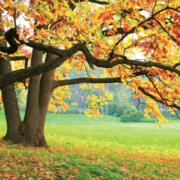Fall may not seem like an ideal time to think about lawn care, considering that your grass will go dormant for the winter. However, autumn is a critical time to groom your lawn for beautiful growth next spring. Fall’s cool and moist weather helps grassroots develop much better than in summer, and taking advantage of this growing period will pay big dividends next year. Here are eight fall lawn care steps that’ll help make your lawn dazzle next year:
- Keep mowing. Grass doesn’t stop growing until it frosts over in winter, so there’s no reason to stop mowing come autumn. Continue cutting your grass at its normal height until it stops growing. Once you call it quits for the season, you’ll need to winterize your mower. This includes sharpening the blades, changing the oil and spark plugs, inspecting the mower for damage, and cleaning the air filter. Our Lawn Mower Maintenance services can help you with this. Schedule service today
- Water when needed. Autumn rain results in less evaporation, providing plenty of natural moisture for the grass to sustain itself. Even so, you should keep tabs on how much water your grass is getting with a rain gauge. If the lawn isn’t getting one inch or more of moisture per week, you should water it. See our lawn irrigation tips for more details.
- Rake often. When leaves fall on your lawn, they block out sunlight and can prevent plants from making food. Additionally, the soggy moisture they hold can lead to lawn fungi. Raking also helps remove any thatch that may have built up. A leaf blower or vacuum won’t remove thatch, so it’s important to use a traditional rake occasionally. Start raking as soon as the leaves fall in order to keep these passageways open. Even after the leaves stop falling, you should continue to rake as the wind blows them onto your property. Raking once a week isn’t too hard right?
- Now is the time to think about aeration. Over the summer, your lawn has probably suffered from some degree of soil compaction and heat stress. These two problems often cause most (if not all) of the brown or thinned grass you may have experienced last season. Aeration is the process of removing soil plugs from a yard in order to free up passageways for precious nutrients to reach the grassroots, nutrients they often struggle to bring in under compaction and stress. Aerating in the fall will help your lawn be green and healthy for the next year. This task is most effective when professional machinery is used, and our exclusive Turf Tamer equipment can help your lawn recover and turn lusher than ever next spring.
- Apply a nitrogen-rich fertilizer. If you want your lawn to look better and be healthier, fertilize in the fall. This process will give your lawn plenty of nutrients to get it through the winter and help the grass grow stronger in spring. As a result, fall is the single most important time of year to fertilize for a healthy lawn. If you decide to aerate in the fall, you should fertilize soon afterward in order to ensure that the nutrients will reach deeper into the soil.
- Seed to fill in bare and burned spots. As we’ve mentioned, many patches of lawn can die during the summertime, so it’s a good idea to reseed those areas with the right grasses. Keep in mind, however, that seeds that don’t touch the soil won’t germinate, and it can be difficult to cover an area of grass thoroughly. Contact us if you want a power seeding that will make your yard look brand new. Power seeding is the process in which seeds are literally sewn into the ground.
- Keep up with lawn pest control. Insects that live in your lawn now can cause serious problems once it starts growing after winter ends. If you notice a lawn pest problem on your grass, take care of it in early fall to limit the damage. You can apply a pesticide, or reach out to us to identify and eliminate lawn pests, such as grubs and armyworms. Fall is also an excellent time to eliminate many types of weeds, so weed control is a beneficial activity as well.
- Keep a Tight Schedule. All of these fall lawn care steps must be performed like clockwork. If you seed and fertilize too close to winter, the soil won’t be able to take in nutrients. Aerate while it’s still too hot out, and the process will not be nearly as effective. The key to a healthy lawn next year is a tight fall lawn care schedule.



